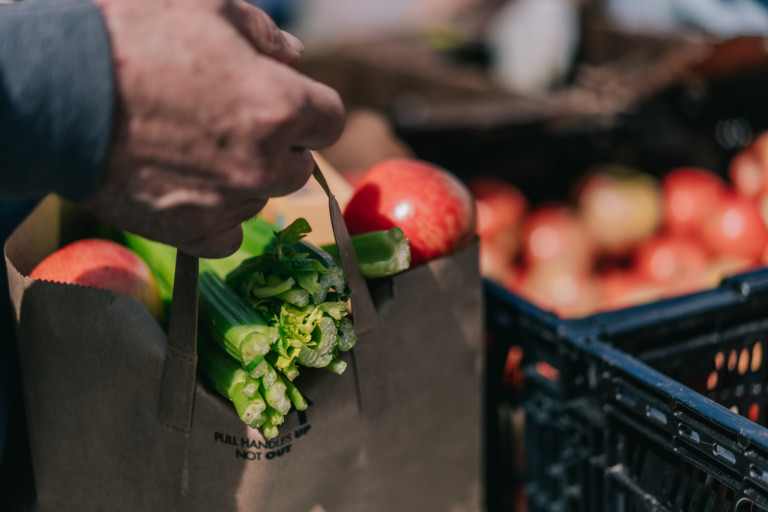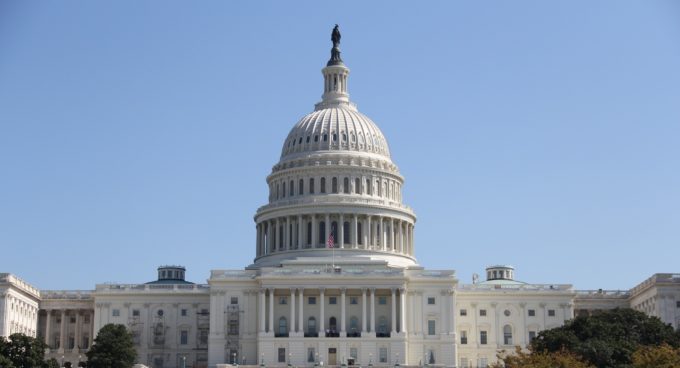 As calls for race-specific data on COVID-19 grow louder, it is becoming clear that the consequences of the coronavirus crisis, including hunger, do not look the same for every community. Within Indian Country, where many Tribal members already live in food deserts and experience disproportionate rates of poverty, this is especially evident.
As calls for race-specific data on COVID-19 grow louder, it is becoming clear that the consequences of the coronavirus crisis, including hunger, do not look the same for every community. Within Indian Country, where many Tribal members already live in food deserts and experience disproportionate rates of poverty, this is especially evident.
In this Q&A blog, Todd Giesen, the Behavioral Health Program Director for the Ute Mountain Ute Tribe, describes what the pandemic means for hunger in indigenous communities and opportunities for strengthening Native communities’ access to food during these uncertain times.
Broadly, what does hunger look like in indigenous communities in the U.S.? Are there factors that make indigenous communities particularly vulnerable to hunger?
Most Indian Reservations are in remote, rural areas outside of standard infrastructure and delivery systems (e.g., Internet, retail). For example, the Ute Mountain Ute Indian Reservation is generally geographically isolated, with the interstate commerce system outlying the Ute Mountain communities of Towaoc, Colorado, and White Mesa, Utah.
Ute Mountain’s neighbor, the Navajo Nation, extends through Arizona, New Mexico, and Utah, and skirts the Colorado and Utah portions of the Ute Mountain Ute Indian Reservation. Many Native communities are extraordinarily remote, and ready access to shopping is limited.
Due to governmental forced relocation, most Tribes were removed from their traditional homelands where they practiced subsistence farming and hunting and gathering. Many were placed in areas with limited potable water and critical infrastructure, inaccessible hunting grounds, and foreign flora and fauna. As a result, Tribes now rely heavily on federal programs, such as United States Department of Agriculture (USDA) commodities, that are not aligned with traditional diets.
What does the COVID-19 pandemic mean for food security within indigenous communities? Will those communities face specific challenges with accessing adequate, nutritious, culturally appropriate foods?
COVID-19 has required Tribes to close their doors to outsiders to reduce and prevent the contagion from affecting vulnerable Tribal members. This has restricted Tribal members from engaging in commerce activities in the surrounding communities where they were employed and purchased food.
Tribal communities are in a race to mitigate exposure of vulnerable elders and those with pre-existing health conditions to the novel coronavirus. If certain members of Tribal communities perish from COVID-19, it would devastate Tribes’ link to their culture and language, possibly leaving a gap in Tribes’ connection to vital history and tradition.
NOTE: Tribes have not forcefully restricted their Tribal members’ movement. However, due to a high rate of diabetes, kidney disease, and other health risk factors, most Tribal members find themselves restricted to Reservations in an effort to protect themselves.
What federal nutrition programs are essential right now for indigenous communities, and what can be done to strengthen them?
USDA commodities and The Emergency Food Assistance Program (TEFAP) are more critical than ever, providing recipients with stable and customary foods. The Mobile Food Pantry (MFP), which provides USDA foods to communities, is vital as well, especially since it can be modified (e.g., it can adapted for doorstep delivery) to meet the needs of all of those who rely on it as a supplemental source of food.
Supplemental Nutrition Assistance Program (SNAP) benefits are another way for Native Americans to get the food they need. SNAP gives consumers the ability to choose and purchase foods that work best for their families. Right now, it is important that states collaborate with the USDA to allow recipients to receive SNAP benefits and USDA commodities without being sanctioned and barred from future participation.
Beyond the federal nutrition programs, partnerships have also played a role in ensuring Tribal members have enough to eat. For example, one organization reached out to their local Feeding America food bank for food assistance support, leading to a large TEFAP delivery of frozen meat (e.g., chicken), beans, rice, fresh produce, and other staples to more than 1,500 people.
What examples of strength, power, and resilience are you seeing within indigenous communities across the nation right now?
Native people are the most resilient people you will ever meet. They seek to meet the needs of one another and rely on their traditions – smudging, sweat lodging, dancing – to ensure they remain connected to one another and to their history. The very story of Native Americans has been one of immense struggle, opposition, and resilience.
What can those reading this do to support and advocate for indigenous communities in the midst of the coronavirus crisis? Are there any organizations working on indigenous hunger and related issues that readers should know about?
Using safe methods, one way readers can support Native communities is by purchasing goods and services from Native vendors, patronizing Native-owned businesses, and frequenting Native-owned enterprises.
Due to each Reservation being geographically isolated and each Tribe being a sovereign nation, most have specific departments collaborating with food providers and organizations like Feeding America food banks to obtain food. It is apparent in the news that record unemployment, school closures, and stay-at-home orders have caused a ripple effect within every community. So many communities, Native and non-Native, are struggling to ensure food security, and the Feeding America network and their partners have worked to meet the needs of the millions facing food insecurity, many for the first time.



